Homestays in Sapa offer a unique experience, immersing visitors in the rich culture of the region’s ethnic minority communities. These accommodations provide an ideal base for trekking adventures, allowing travelers to deeply connect with the local way of life and traditions.
Why you should stay in a homestay in Sapa
Choosing to stay in a homestay in Sapa is an excellent decision for travelers seeking a more authentic and personal experience. Unlike conventional hotels or hostels, homestays provide a unique window into the lives of the local people, offering a chance to connect deeply with the culture that makes this area so special.
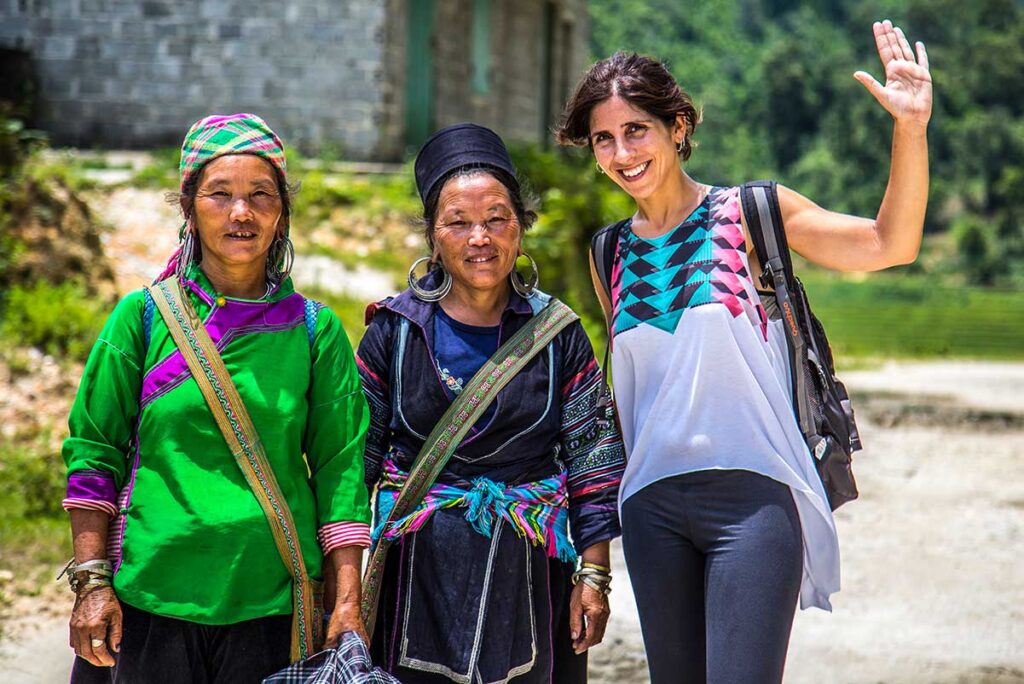
The variety of homestays available in Sapa, each with its own set of advantages, ensures that every traveler can find a place that suits their preferences. Regardless of the type, all homestays share a common trait: they offer an immersive experience that you simply cannot find in standard accommodations.
Staying with a local family not only allows you to experience their daily life but also provides an opportunity to learn about their traditions and customs firsthand.
Different types of homestays in Sapa
The concept of a homestay in Vietnam, particularly in Sapa, has evolved over the years. Originally, it meant staying in the home of a local Vietnamese family, offering an authentic and personal touch to your stay. This type of accommodation allows for direct interaction with the locals, often including shared meals and cultural exchanges.
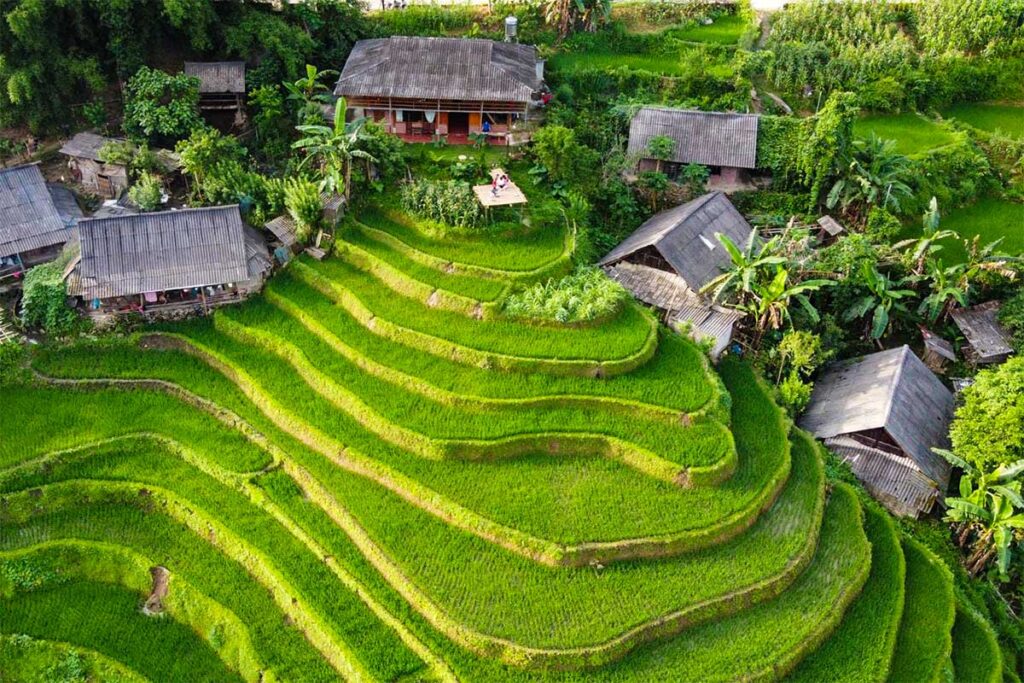
However, the term ‚homestay‘ has broadened and is now used more widely, ranging from basic stays in someone’s home to accommodations resembling small hotels. While they all maintain a small-scale, intimate setting, not all modern homestays provide an in-depth cultural experience.
Traditional Ethnic Minority Homestays
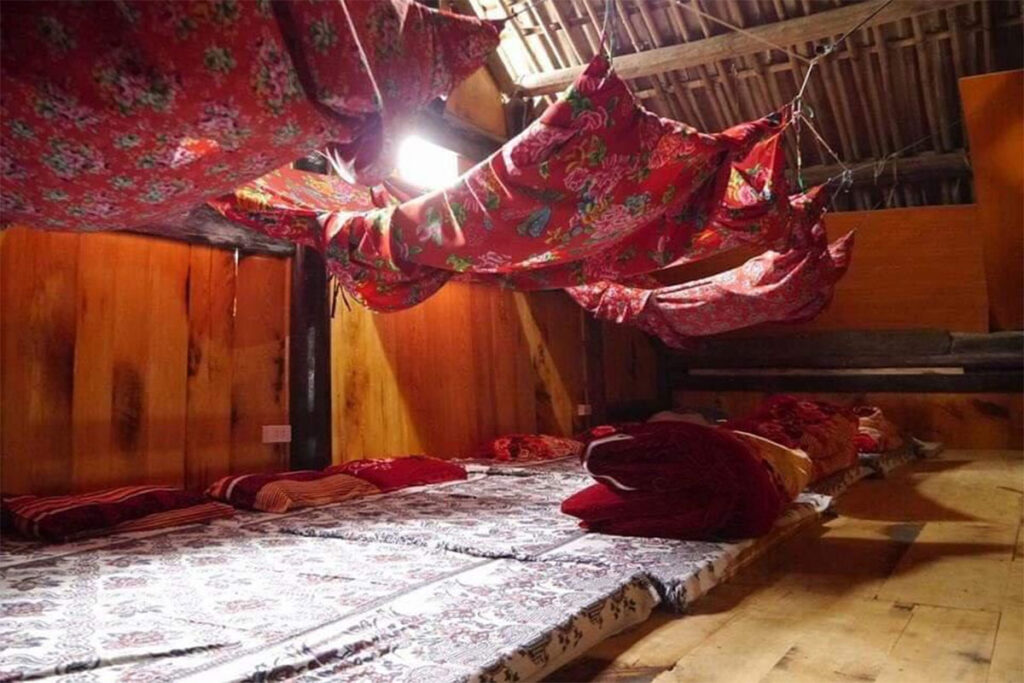
The majority of homestays in Sapa stay true to the original concept, where you spend the night in the home of local families, particularly those belonging to ethnic minorities. These homestays are often quite basic, prioritizing an authentic cultural experience over modern comforts.
The simplicity of these accommodations offers an unparalleled insight into the unique culture and daily life of the ethnic groups in Sapa. While these homestays may lack certain comforts, staying at least one night is highly recommended for those seeking a genuinely immersive experience. They are especially popular among trekkers who wish to experience local life during multi-day hikes.
Modern Homestays
Sapa also boasts more contemporary homestays that blend local charm with modern amenities. While these may offer a slightly diluted authentic experience compared to traditional homestays, they still provide a more culturally rich environment than city hotels.
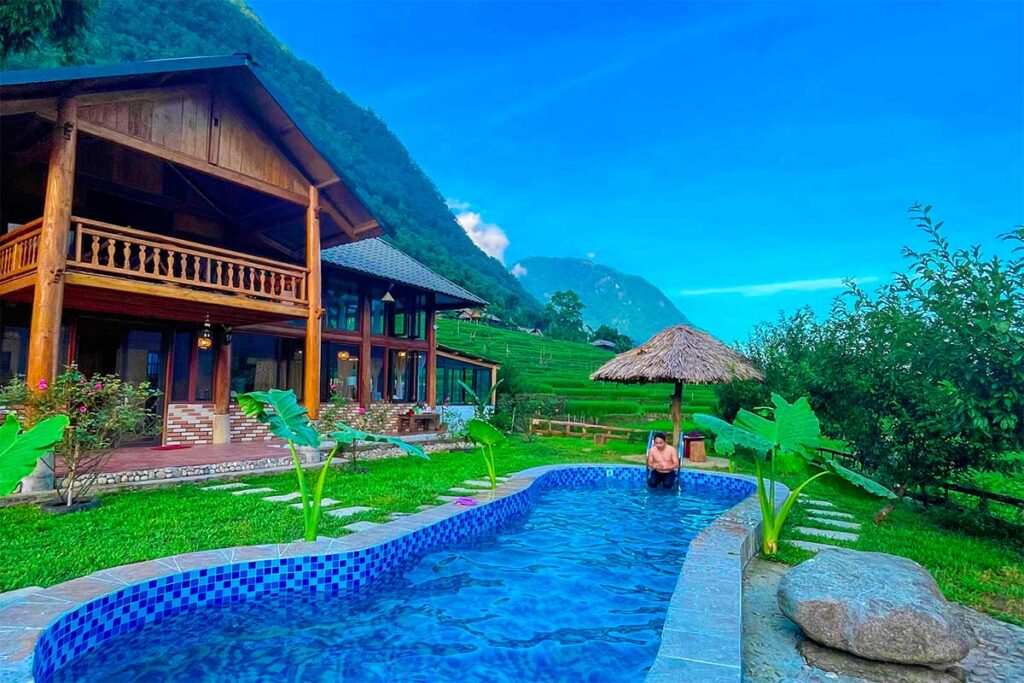
Located in and around the villages, these modern homestays feature amenities like air conditioning, private bathrooms, and comfortable beds with mattresses. Some even have small onsite restaurants, giving guests the option to choose their meals instead of participating in family dinners. These homestays are ideal for travelers who wish to enjoy local culture but prefer more familiar comforts.
What to expect from a traditional homestays in Sapa
Traditional homestays in Sapa offer an authentic experience, allowing guests to immerse themselves in the local culture and lifestyle. Here’s what you can expect when staying in one of these traditional homestays:
Basic Amenities
Despite their rustic nature, homestays in Sapa are equipped with certain basic amenities to meet the needs of tourists. Guests can expect to find western-style toilets, showers, and mosquito nets in the sleeping areas. These facilities ensure a comfortable stay even in the midst of a traditional setting.
Communal Dining
One of the highlights of staying in a homestay is the communal dining experience. Guests often eat together with the host family, enjoying meals cooked over an open fire. This not only provides an opportunity to taste authentic local cuisine but also to observe and learn about traditional cooking methods.
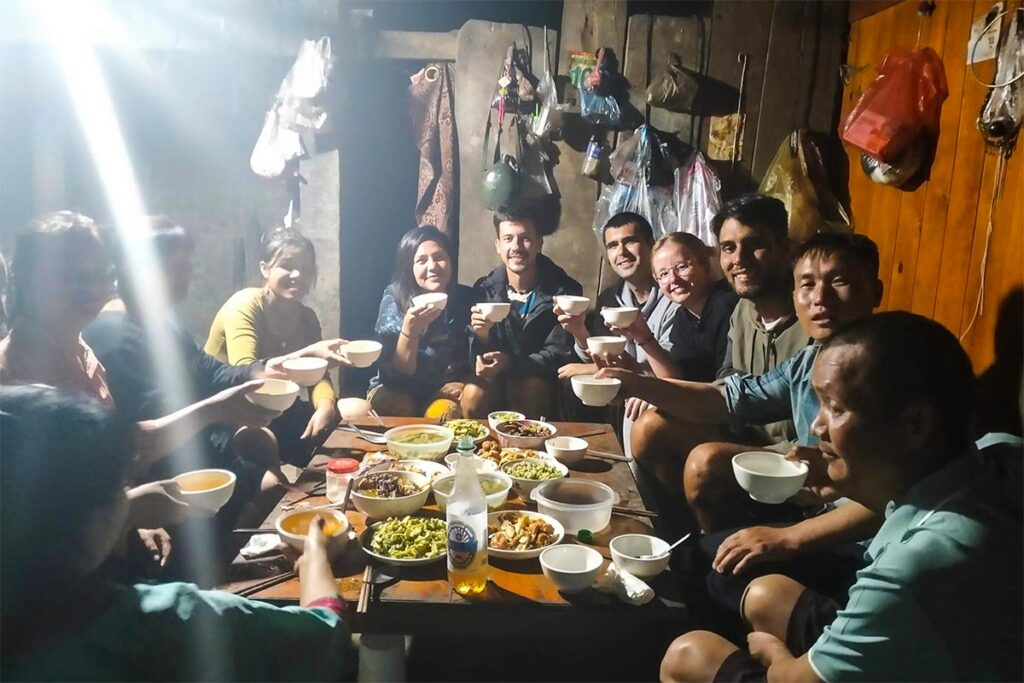
Herbal Baths
Some homestays in Sapa, particularly those run by the Red Dao ethnic group, offer herbal or medicinal baths. These baths are especially refreshing after a day of trekking and provide a unique cultural experience. The herbal baths are known for their therapeutic properties and are a part of the local health and wellness practices.
Evening Socializing
Nights at a homestay often involve socializing with the host family and other guests. This may include drinking local beverages (participation is optional) and sharing stories. If you’re staying as part of a trekking tour, your guide can help facilitate communication and interaction with your hosts, enriching your understanding of their culture and lifestyle.
Overall Experience
Staying in a traditional homestay in Sapa is an incredible experience, offering a deep dive into the local way of life. While the comfort level may be basic compared to standard hotels, the cultural richness and personal connections you gain are invaluable. It’s an experience that is highly recommended for at least a part of your Vietnam holiday, providing a unique perspective on the country’s diverse cultural tapestry.
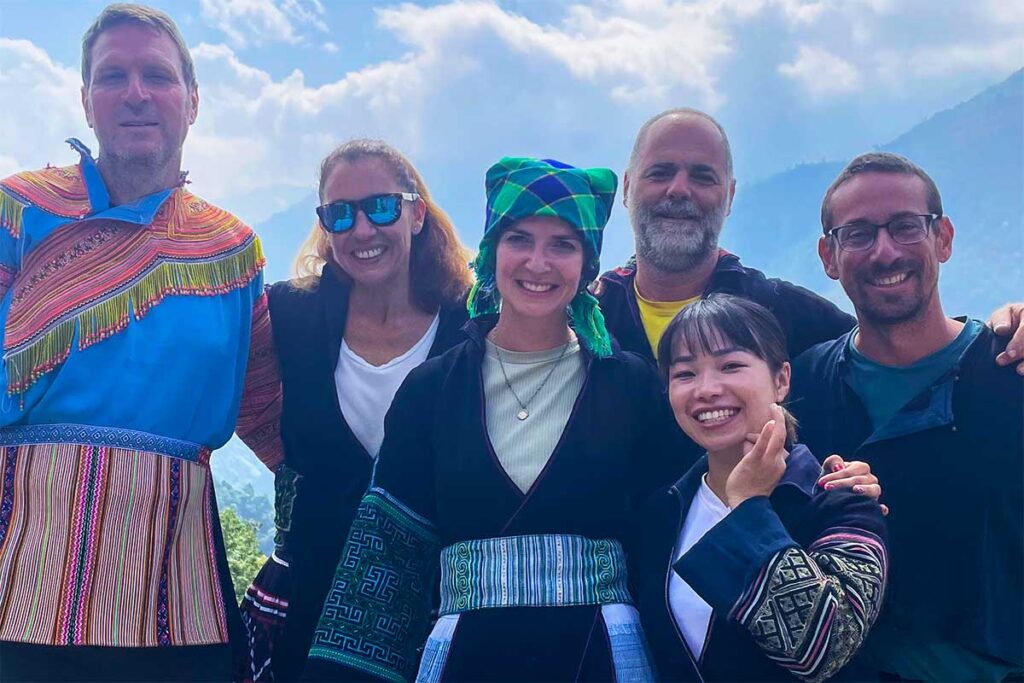
Best villages around Sapa for homestay experience
Discovering the best villages around Sapa for an authentic homestay experience is key to immersing yourself in the local culture. Each village offers its own unique charm and insights into the lives of various ethnic minorities. Here are some of the top villages you should consider:
1. Ta Van
- Ethnic Minority: Hmong, Red Dao, Giay
- Distance from Sapa: 10 km
- Entrance Fee: 70,000 VND
Ta Van is a popular choice for its accessibility and proximity to Sapa. The village is not only beautiful but also surrounded by some of the most picturesque terraced rice fields in the province. The suspension bridge over the river adds to its charm.
Recommended Homestays:
- Luckydaisy Buffalo House: Offers comfort with a modern touch, including heated mattresses.
- Eco Hills Homestay: Basic, non-traditional bungalows with stunning views.
- Zmonghomestay: Nestled among rice fields, hosted by a friendly family.
- Indigo Snail Boutique Hmong Homestay: Known for excellent hospitality.
2. Lao Chai
- Ethnic Minority: Hmong, Red Dao
- Distance from Sapa: 7 km
- Entrance Fee: 50,000 VND
Easily accessible from Sapa, Lao Chai is home to about 100 Black Hmong families. The village is part of the impressive Hoang Sien Lon mountain range and is a popular stop on trekking routes.
Recommended Homestays:
- Lao Chai Bamboo Stay: A comfortable traditional Hmong house amidst rice fields.
3. Ban Ho
- Ethnic Minority: Tay, Red Dao
- Distance from Sapa: 30 km
- Entrance Fee: 15,000 VND
Ban Ho, a picturesque village, is known for its welcoming locals and cultural richness. The village is alive with traditional weaving and nightly gatherings around campfires for singing and dancing. Nearby waterfalls add to its allure.
Recommended Homestays:
- Homestay Mr Thang
- Homestay Mr Lai
- Homestay Mr Kien
4. Ta Phin
- Ethnic Minority: Red Dao
- Distance from Sapa: 12 km
- Entrance Fee: 20,000 VND
Ta Phin, home to the Red Dao ethnic group, is known for its medicinal baths. The village offers developed homestay options and is a great place to enjoy local handicrafts and cuisine.
Recommended Homestays:
- Ta Phin Homestay: Quiet and authentic, located on the village’s edge.
- Sapa Homestay Ta May: Known for its cozy atmosphere and medicinal baths.
5. Y Linh Ho
- Ethnic Minority: Hmong
- Distance from Sapa: 5 km
Often overlooked, Y Linh Ho offers excellent trekking opportunities. The village feels remote due to its topography, even though it’s close to Sapa city.
6. Sin Chai
- Ethnic Minority: Black Hmong
- Distance from Sapa: 5 km
- Entrance Fee: 40,000 VND
Sin Chai is a less touristy village close to Sapa, offering a glimpse into the daily lives of the ethnic people. It’s an ideal place for those looking to see authentic local life without the commercialization.
7. Y Ty
- Ethnic Minority: Hani
- Distance from Sapa: 70 km
Y Ty, a remote village located at an altitude of 2000 meters, is often enveloped in clouds. It’s known for its stunning terraced rice fields and unique mushroom-shaped earth houses. The weekly market is a cultural highlight.
